Depending on which region of the world you are in, you will find different types of non-timber forest products. Boreal Forest Mushrooms are a famous non-timber forest product that’s been intertwined with cultures all over the world. They have been used in cuisine, medicine, and religious rituals.
Some mushrooms are edible, some are poisonous. Learning to correctly identify them is the first step into the wonderful world of mushrooms.
In this guide, we will go into detail on the boreal forest mushrooms with the most commercial value.
What they look like, when they fruit, and how to find them.
When to Forage Wild Mushrooms
Boreal Forest Mushrooms harvest can start as early as spring but some areas only allow to pick during late summer and early fall.
Waiting to pick mushrooms and giving them time to spread their spores is the sustainable way, but the harvesting technique is also important.
If you pick them all too early, you might have a much smaller crop the following year and could eventually wipe them out. Although mushrooms often spread in mysterious ways.
Mushrooms can deteriorate quickly in their late life, as a matter of fact, many edible mushrooms appear on the forest floor for a small amount of time.
Picking mushrooms during the perfect gap of time is a skill you will build over time, and becoming familiar with your mushroom spots is a must.
Picking Mushrooms after Natural Events
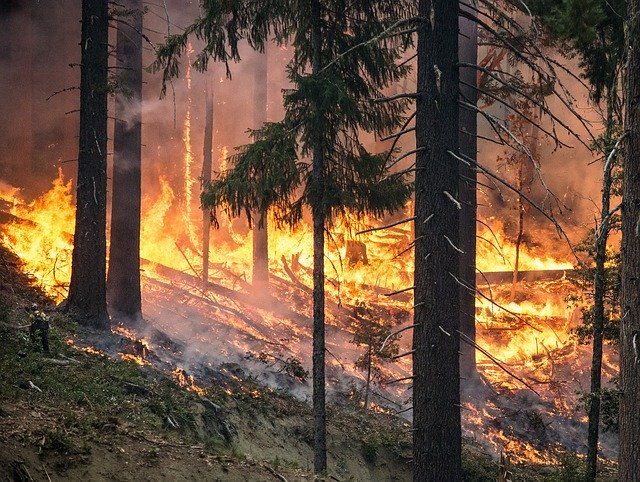
Its also common to pick mushrooms in the boreal forest a year after a burn, as the forest floor regenerates, conditions become great for mushroom growth.
How to Pick Wild Mushrooms
Many boreal forest mushrooms such as mycorrhizal mushrooms grow roots that touch and connect many trees and plants in the surrounding forest floor. Pulling the roots out will destroy such systems and damage the surrounding environment.

The best way to pick mushrooms is to cut them just above the root.
A good old-fashioned wicker basket is perfect for collecting wild mushrooms.
It’s also important to carefully inspect any mushroom you pick for worms or insects. It’s common to find mushrooms that have already been chomped by the nearby fauna.
The Dangers of Picking Wild Mushrooms
It’s primordial to confirm that you’re picking the correct mushrooms since some desirable mushrooms have toxic lookalikes.
Eating the wrong mushroom can send you into crippling sickness and even kill you.
Some boreal forest mushrooms are poisonous because they have certain chemicals that cause side effects on your body. Chemicals such as:
- Amanine: The worst of toxins, causes kidney and liver failure.
- Gastrointestinal irritants: Common but varied with each individual, proteins, and amino acids in mushrooms can cause irritation after eating.
- Muscarine: Causes nausea, vomiting, and can lead to respiratory failure.
- Ibotenic Acid, Muscimol, and Isoxazole derivatives: Causes strange effects on the nervous system, it often leads to feelings of euphoria followed by a deep sleep.
- Gyromitrin & Monomethylhydrazine: Leads to bloating, abdominal pain, and vomiting, can cause liver failure.
- Coprine: This chemical interacts badly with alcohol and should not be mixed as it causes weakness and dizziness.
- Psylocybin & Psilocin: Has hallucinogenic properties, temporarily changes perception of time and thought process.
Eastern North American Destroying Angel (Amanita Bisporigera)
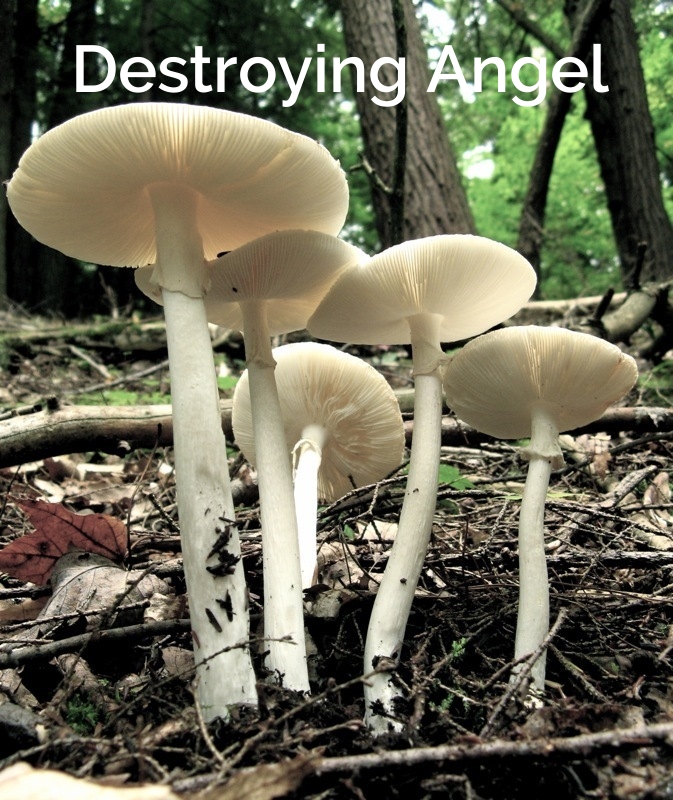
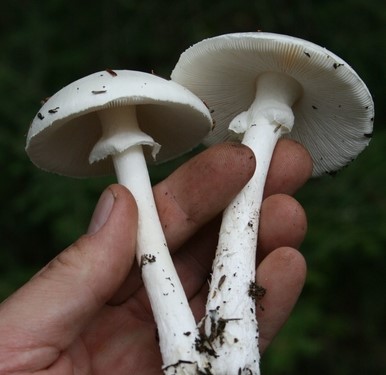
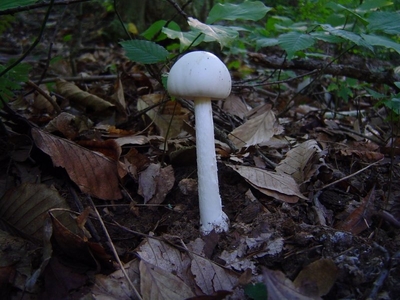
DEADLY!
One truly deadly mushroom native to North America everyone should avoid: The eastern North American Destroying Angel, Amanita Bisporigera.
You can recognize them with their white stalk, gills underneath a white cap, and more importantly the white ring below the cap.
The amatoxins (amanine) in this mushroom will destroy your liver and kidneys, yet it can take from 5 to 24 hours before the effects kick in.
These mushrooms alone account for the majority of mushroom-related deaths. Only half of a mushroom is necessary to seriously render someone ill.
The remaining toxic mushrooms in North America can be found here.
Mushrooms Phytogeographic Zones
When talking about plants, we use the 13 hardiness zones to classify the variety of plant species we find growing in the wild.
But with mushrooms, you can’t specifically associate them with climate zones because where you find them depends more on other factors like:
- Soil type
- Microclimate
- Vegetation
This guide focuses on mushrooms and fungi found in the North American boreal forest phytogeographic zone. In this guide, you will find the following boreal forest mushrooms:
- Black Morel
- Matsutake
- Chanterelle
- Fly Agaric
- Porcini
- Aspen Oyster
- Lobster Mushroom
- Gypsy Mushroom
- Hedgehog Mushroom
- Birch Milkcap
- Black Trumpet
- Swollen-Stalked Cat
- Turtle Mushrooms
- Yellow-Foot Chanterelle
- Fairy Ring Mushrooms
Let’s get started:
Black Morel (Morchella Elata)
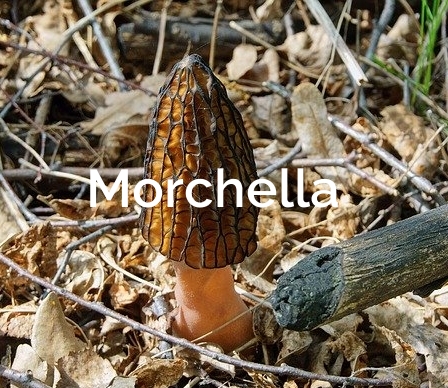
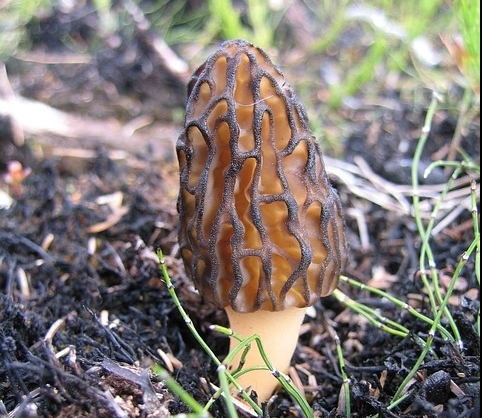
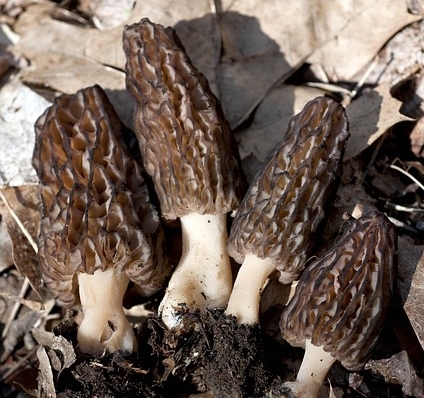
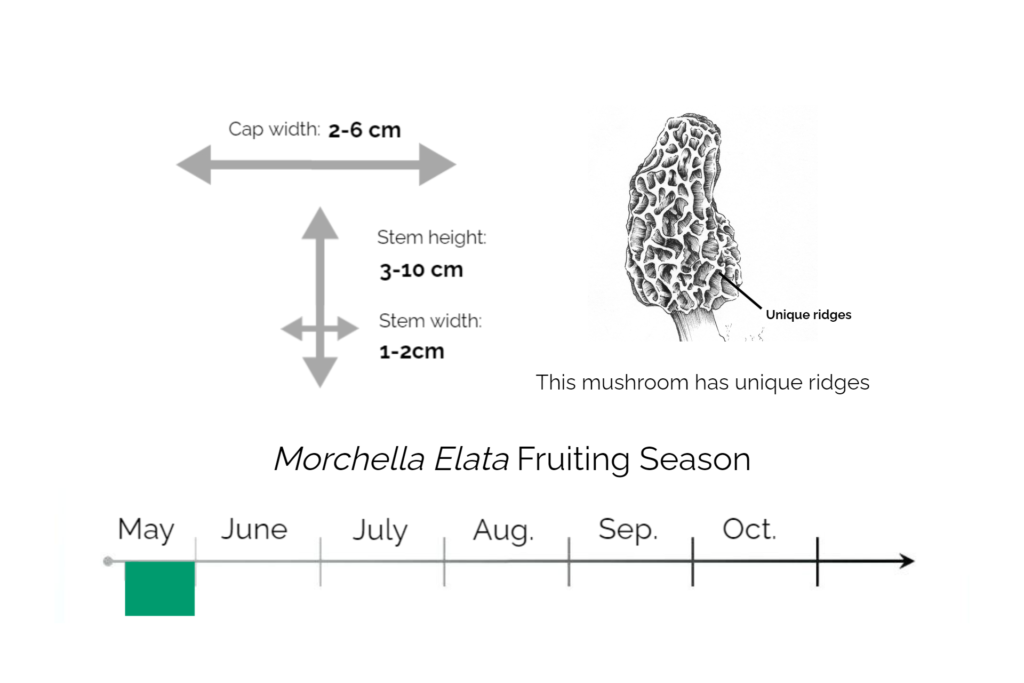
Emerges early spring along the west coast and late spring along the great lakes. Harvested until Fall.
Morels can be found at the edge of forested areas growing near the base of ash, elm, aspen, and oak trees. Look for south-facing slopes during the spring as this is where they most often grow. As the season progresses you will find them on north-facing slopes a bit deeper into the woods.
Rivers banks with well-drained sandy soils are also good spots. When you find a morel, slow down your pace because if there is one, then there is a great chance you will find more in the surroundings.
At the base of dead trees. Dying trees like elms or old apple orchards are great spots to search.
Keep in mind while looking that early-season morels are quite small, maybe acorn size but as the season progresses they can get quite large and with a noticeable yellow color. Happy morel hunting!
Edible: Very tasty mushroom.
For more details, check out: How to Identify Morel Mushrooms.
Matsutake (Tricholoma magnivelare)
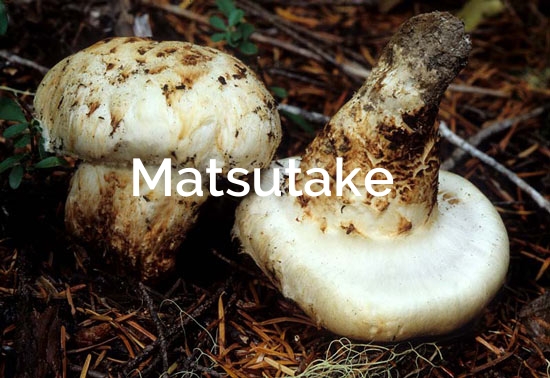
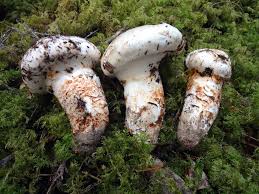
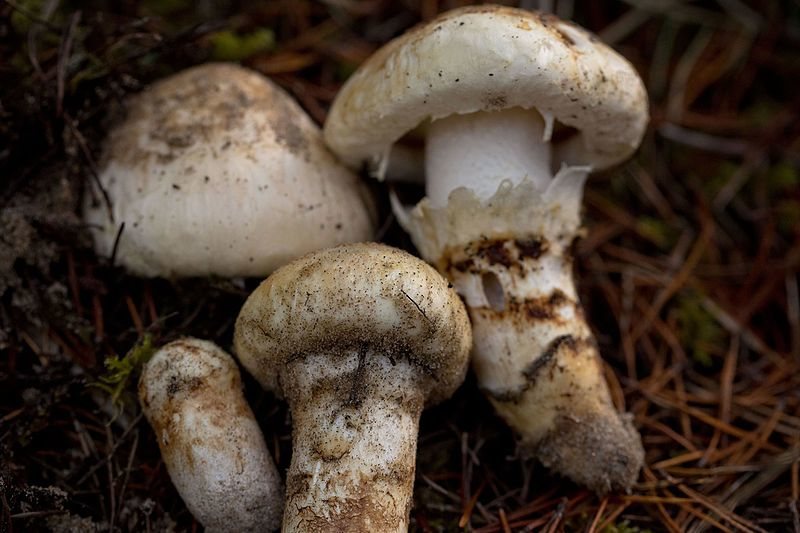
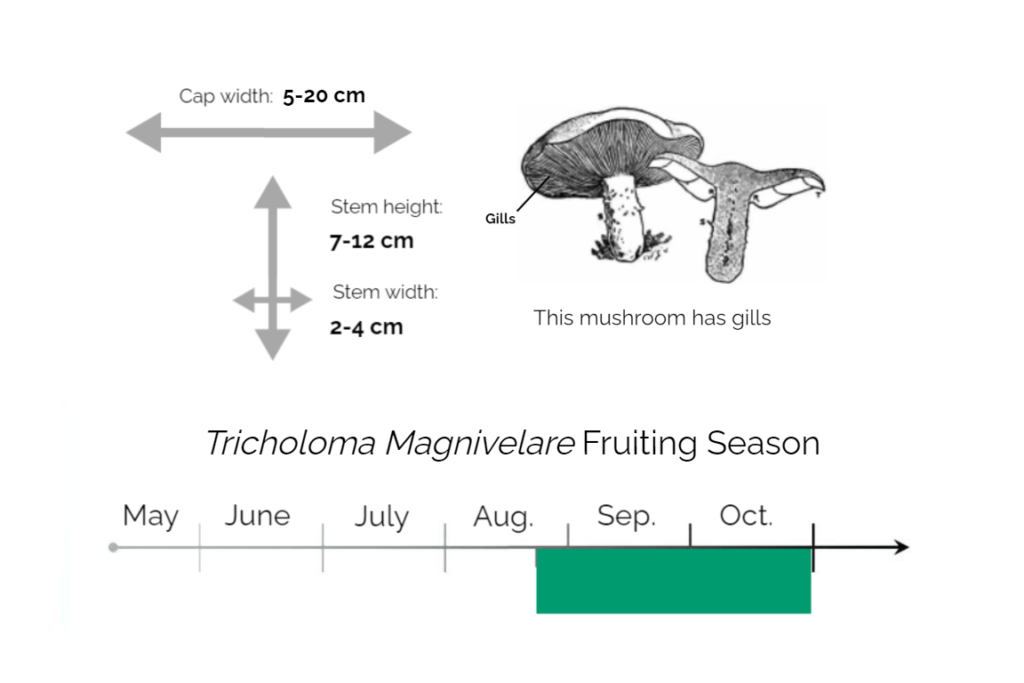
Matsutake mushrooms are regulated in most areas, their picking season usually starts in early fall. Found from the west coast to the midwest.
American Matsutake mushrooms are quite elusive, they are a highly sought out spicy-smelling kind that is a key ingredient in some Japanese dishes. You need to know that this mushroom is special and has a symbiotic relationship with trees, picking them in excess will damage a forest ecosystem. Always leave some in every patch you find to let the spores propagate.
Matsutake are white-colored mushrooms that grow in sandy soils. You can often find them mostly buried under the soil, with only the cap showing. They can be hidden under moss or piles of dead pine needles. Look for a hump around trees and there’s a chance you’ll find one there.
When you find an old matsutake that’s beyond picking age, look uphill from that area. The spores tend to propagate towards areas of higher elevation as the season progresses.
They have a distinct cinnamon and pine aroma that helps you avoid mistaking them for similar-looking species such as Catathelasma ventricosum.
Edible: One of the most delicious mushrooms you can find!
For more details, check out: How to Identify Matsutake Mushrooms.
Chanterelle (Cantharellus Cibarius)
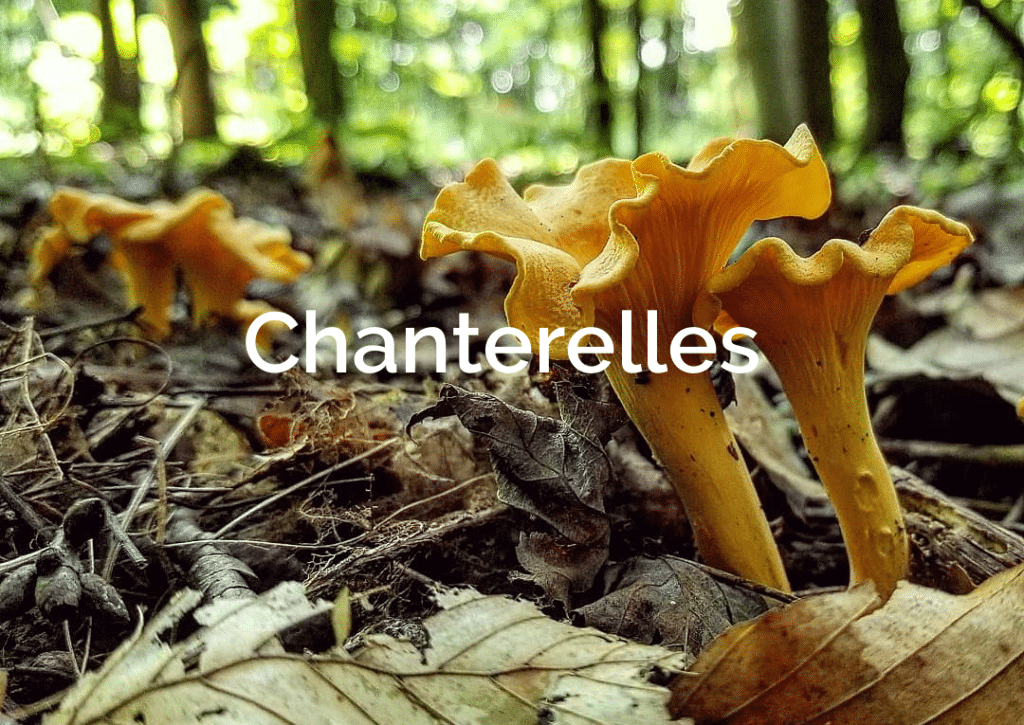
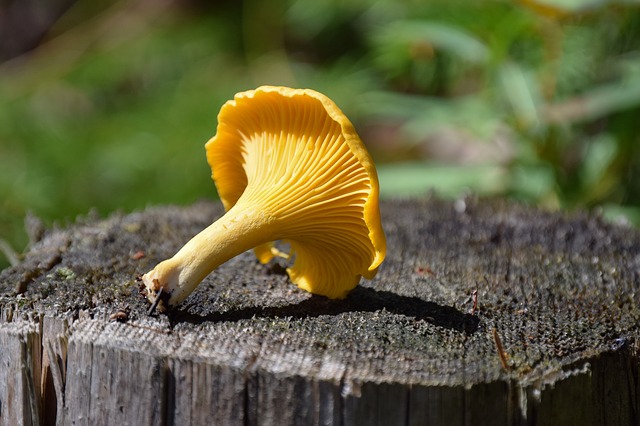
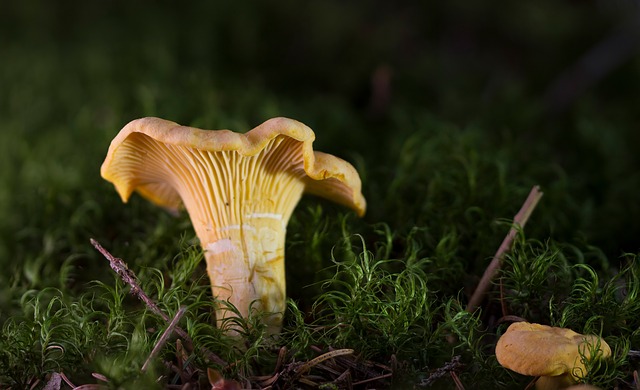
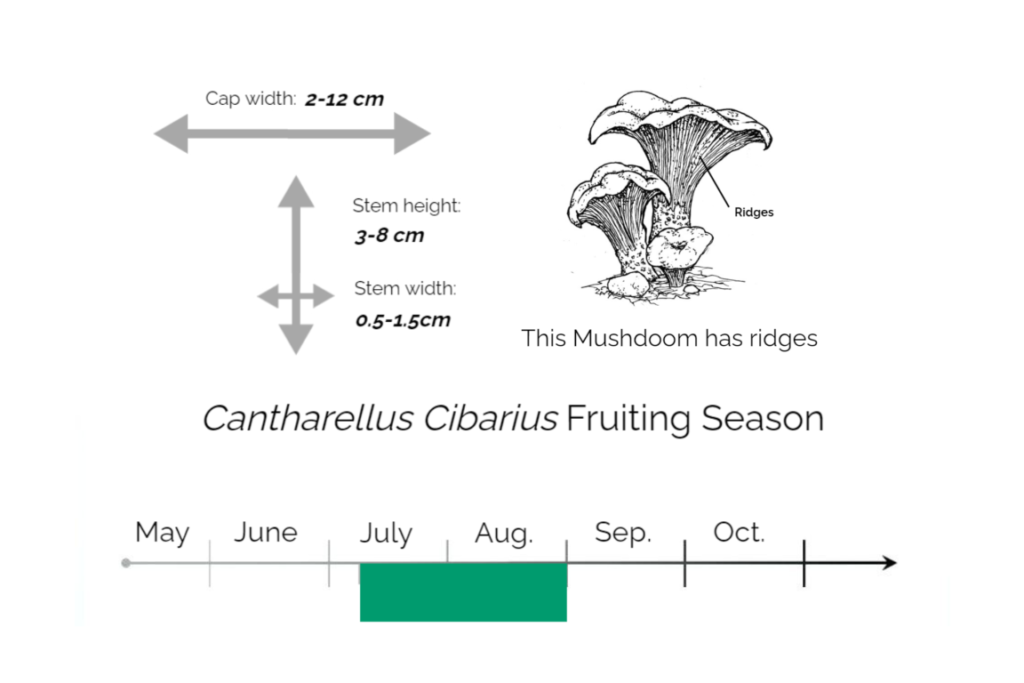
Best to harvest late summer, early fall. It can be found throughout most of North America.
Chanterelle picking season usually starts early June, after a good rainfall. You can find them on the ground patches of ones or twos. They often grow around oaks, maple, beech, poplar, Douglas firm hemlock, and birch. They will often grow at the edge of treelines so old logging areas or trails are great spots to search. Old forests, as opposed to new forests, will have perfect conditions for picking chanterelles.
They will grow in moist areas, creek beds, and areas where water flows after rainfall are great spots. In southern areas, they can be found under blueberry bushes and mountainy areas around douglas fir and white pine.
The most important with chanterelles is that if there hasn’t been any rain lately, you’ll most likely be wasting your time searching. But under the right weather conditions and in the correct forest, it’s not unheard of to collect up to 30 pounds of chanterelles in an afternoon!
Edible and delicious.
For more details, check out: How to Identify Chanterelle Mushrooms.
Fly Agaric (Amanita Muscaria)
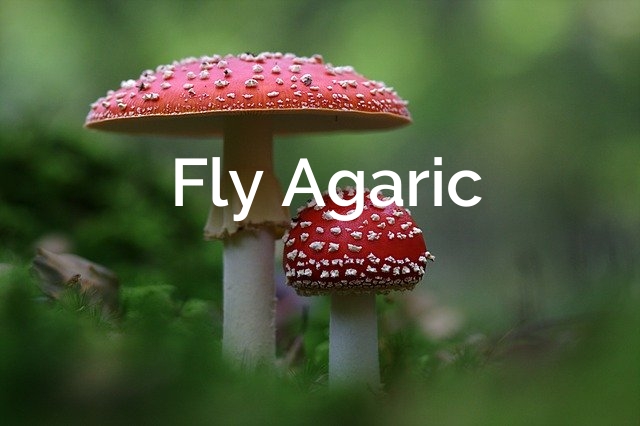
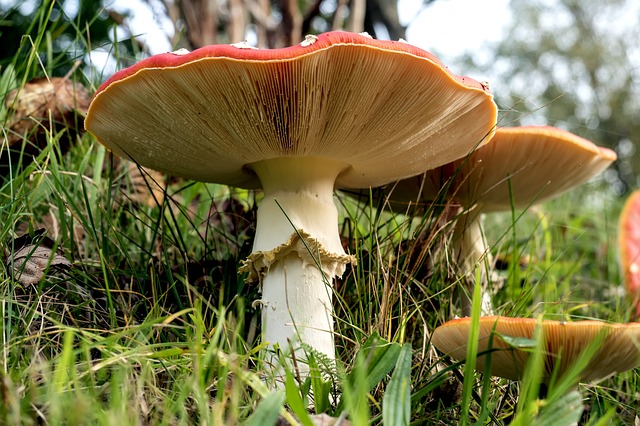
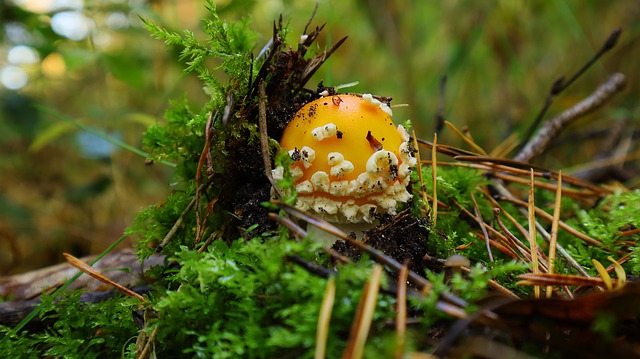
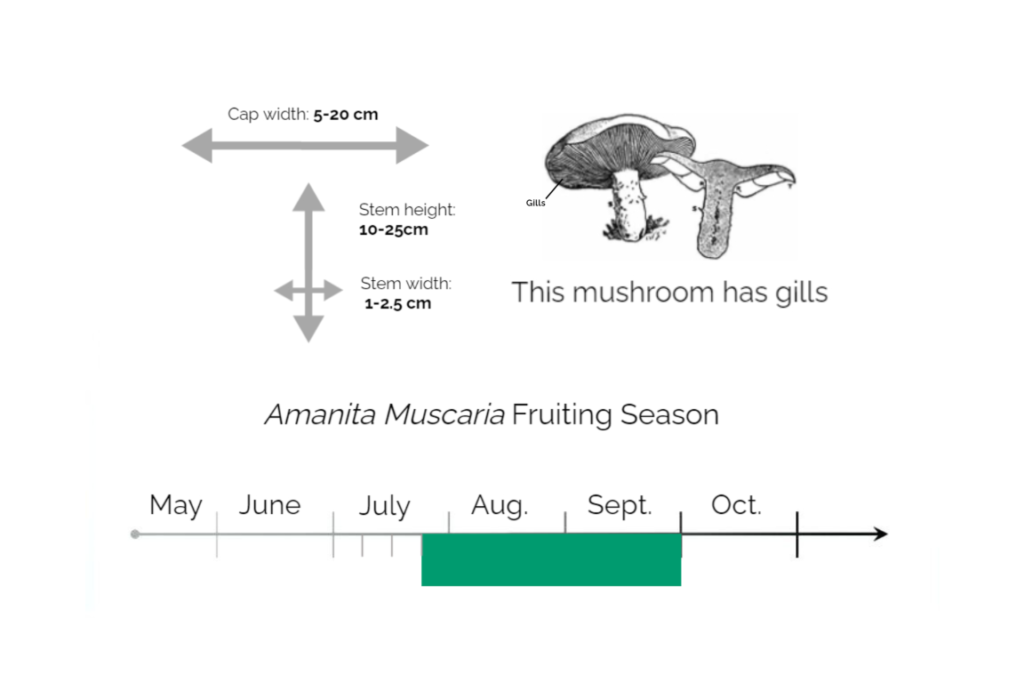
Best to harvest Late July all the way to September. Can be found almost all over the world.
Amanita Muscaria is the mushroom of legends, the classic red and white mushroom that is the root of myths and once upon a time an important ingredient for shamans worldwide.
You can often find it growing under firs and spruces.
In North America, the bright yellow/orange colored var. guessowii is the most commonly found of fly agaric.
WARNING: Do not confuse this mushroom with the all-white Amanita bisporigera (destroying angel). The eastern North-American destroying angel is a highly poisonous mushroom that is lethal.
Amanita Muscaria is often found already chomped or eaten by some denizen of the forest, curiously it would seem that many species like to eat the mushroom and experience the effects.
Fresh Amanita Muscaria is toxic, but it can be eaten for nutrition or medicinal effects only through the right preparation. Read how at the Ambrosia Society amanita preparation guide.
Amanita Muscaria is a good indicator for porcini mushrooms and vice versa.
For more details, check out: How to Identify and Prepare Amanita Muscaria var. Guessowii.
Porcini Mushrooms (Boletus Edulis)
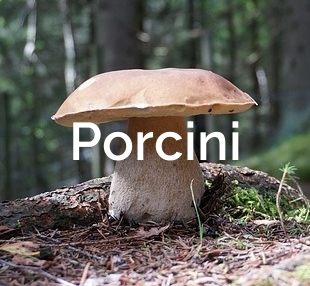
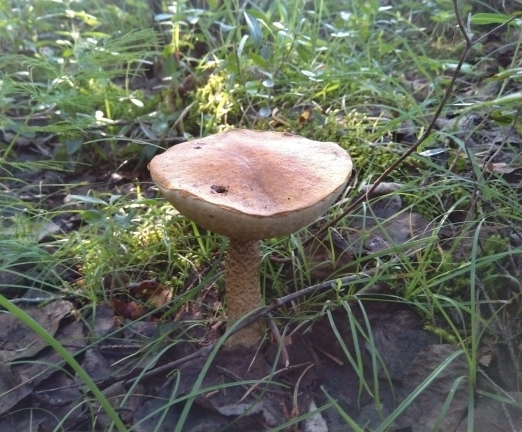
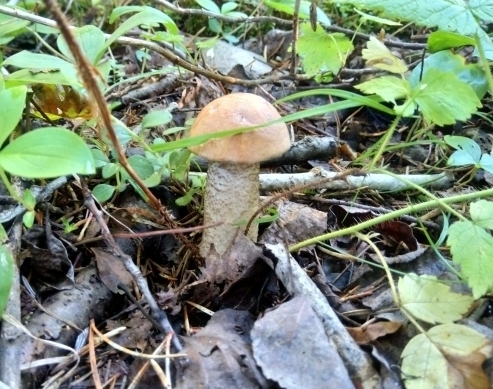
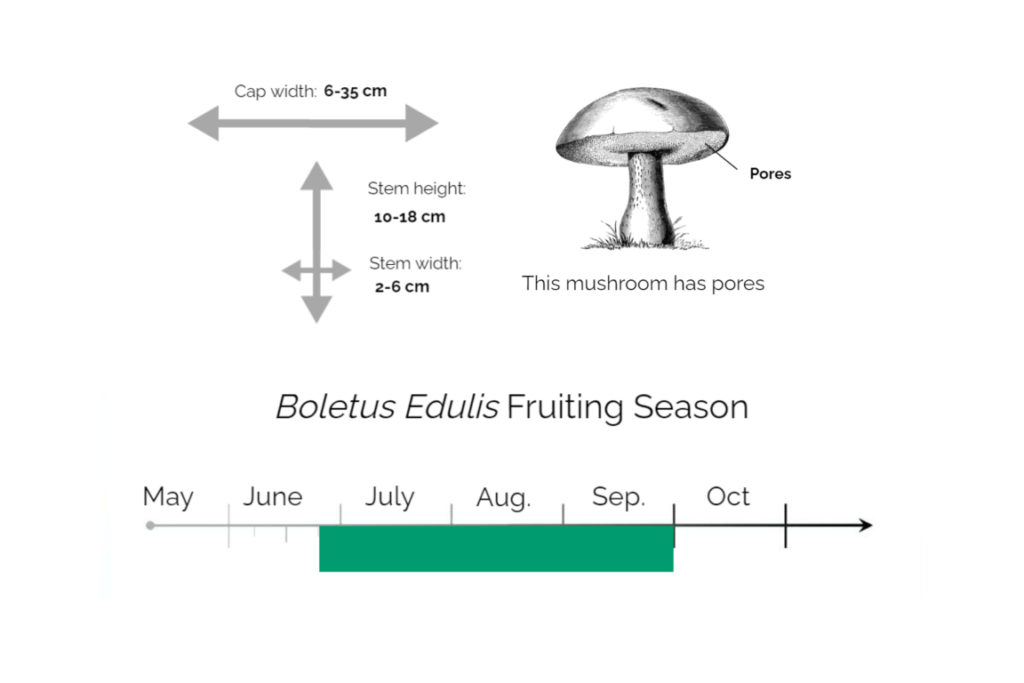
Harvested from late June all the way to the end of September. Their habitat spreads throughout the whole northern hemisphere.
Porcini mushrooms are often found at the edge of the forest or in clearings in coniferous forests or in forests with broad-leaved deciduous trees.
Boletus are ectomycorrhizal mushrooms that form a symbiosis with the surrounding trees. Because of this, you want to cut only the fruit with a knife, if you pull it out you risk damaging the mycelium system underground.
Boletus mushrooms are identifiable by their underside, instead of gills, they have pores sometimes giving a flat looking surface or sometimes a vein-like pattern.
Edible and delicious.
Oyster Mushrooms (Pleurotus Populinus)
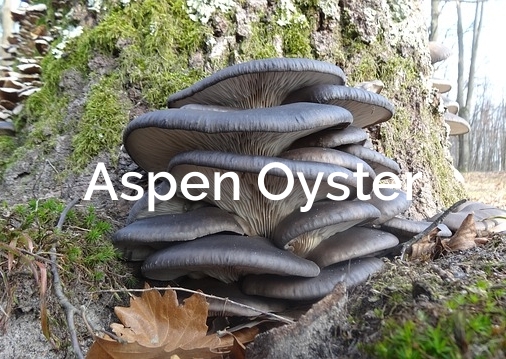
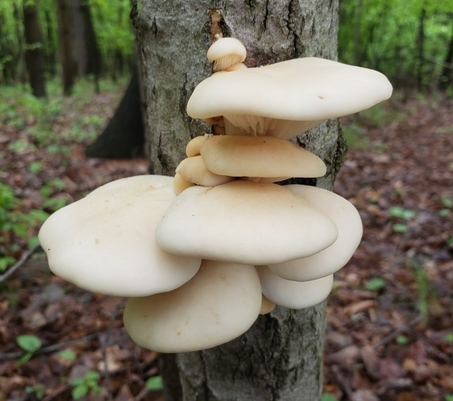
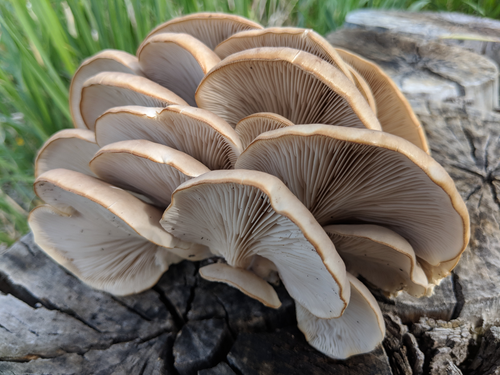
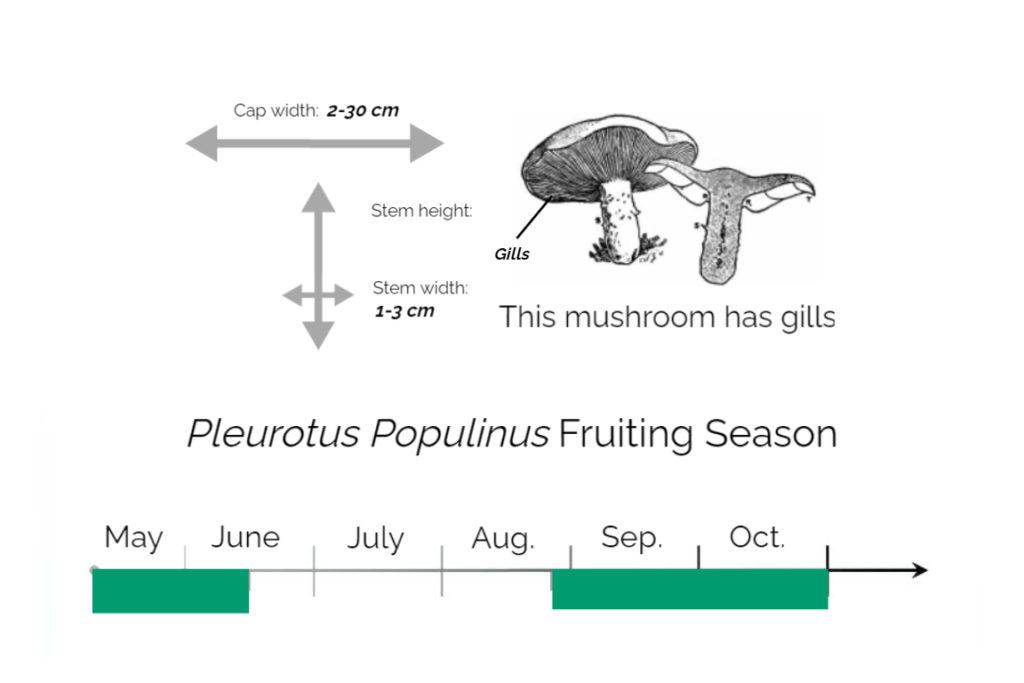
Pleurotus populinus are often found growing late summer to fall when the temperature is cool enough to trigger the right environmental conditions for fruiting.
Since they are saprophytic, you can only find oyster mushrooms growing on dead logs, particularly on deciduous hardwoods, good examples are beech and aspen trees.
A good way to identify oyster mushrooms is to look underneath for gills that run from the top of the mushroom all the way down the stem.
Oyster mushrooms are edible can make delicious sautés.
For more details, check out: How to Identify Oyster Mushrooms.
Lobster Mushroom (Hypomyces Lactifluorum)
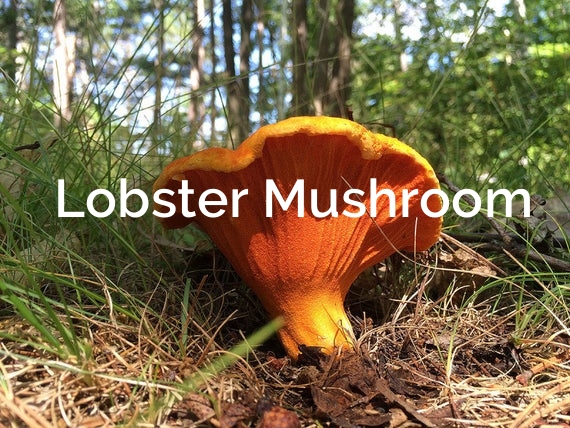
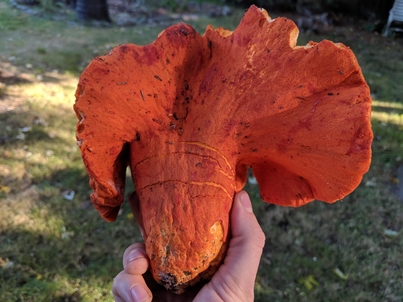
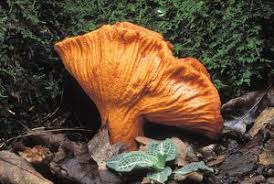
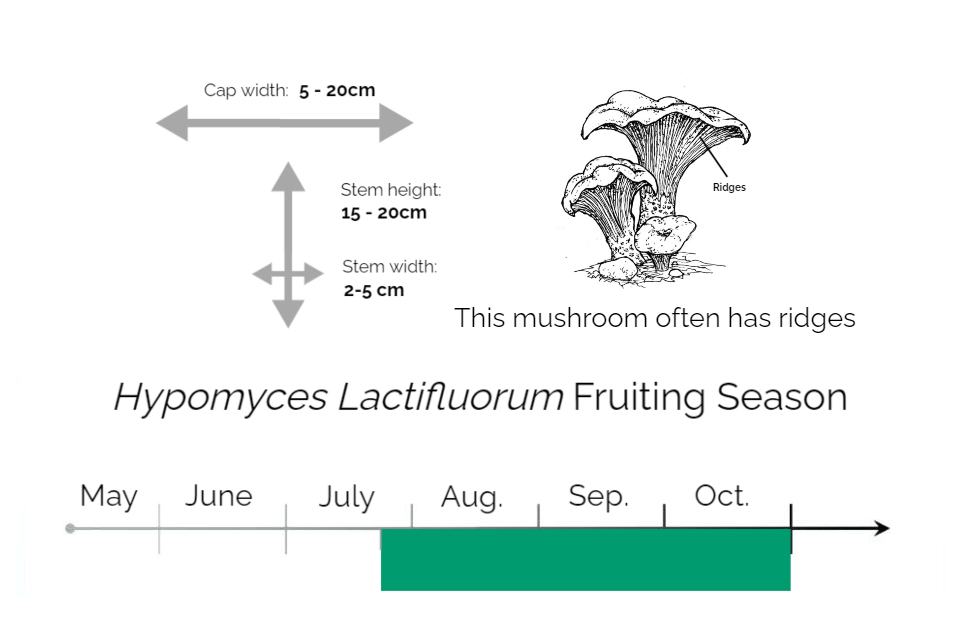
Hypomyces Lactifluorum can be found grabbing host onto other mushrooms from late July to October.
Lobster mushrooms aren’t actually a mushroom but parasitic ascomycete fungus that grows on certain species of mushrooms, often contorting them and covering their surface in bright orange color.
They often grab host onto Lactaria or Russula mushrooms but over time will twist the mushroom into an unrecognizable shape.
You can commonly find them around chalets, campgrounds, old logging trails, in moist sandy soils often near alder.
Edible and delicious.
Gypsy Mushroom (Cortinarius caperatus)
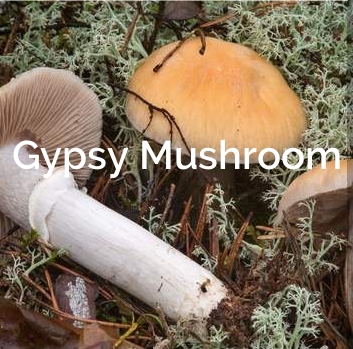
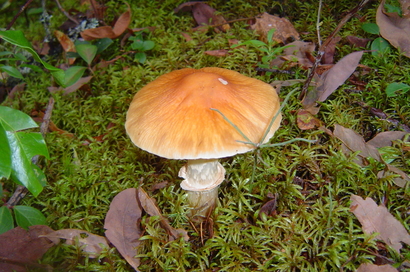
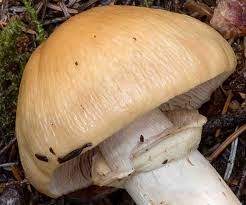
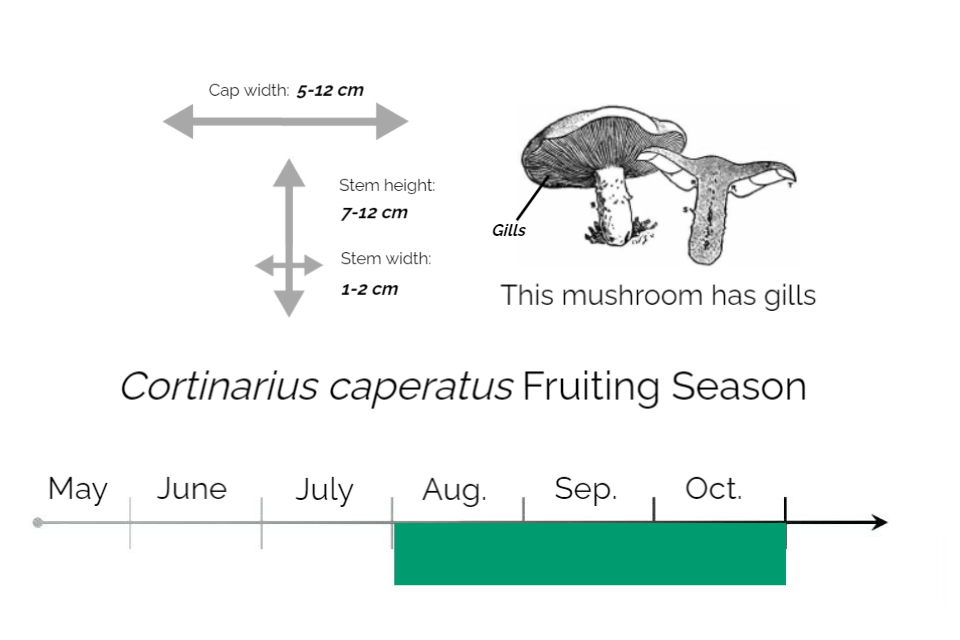
Gypsy Mushrooms can be harvested from August to October throughout eastern North America.
They often grow alongside conifers, hardwoods, and blueberry bushes, they can be recognized by their slightly wrinkly cap.
Gypsy mushrooms are quite delicious but very rare and spawn only in small numbers.
Did you know Cortinarius caperatus is a beneficial mushroom to the forest? They are ectomycorrhizal, gypsy mushrooms specifically are known to create a symbiosis with conifers, beech trees, and ericaceous plants.
Edible: The flavor is mild but if the meat is clean, it’s an easy addition to many meals.
It should be noted that Gypsy mushrooms draw heavy metals from the soil, this means you should only pick them in lands that you know are not contaminated.
Hedgehog Mushroom (Hydnum repandum)
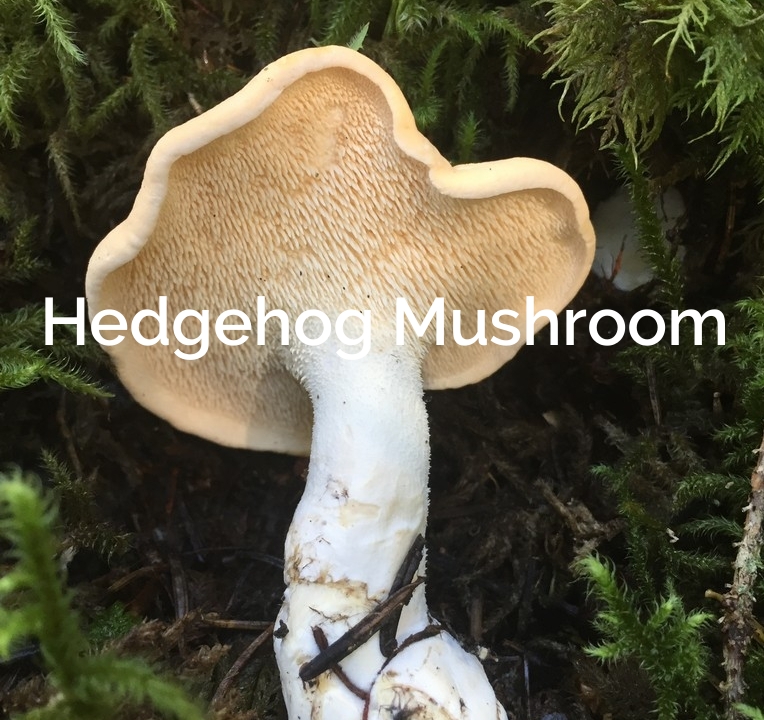
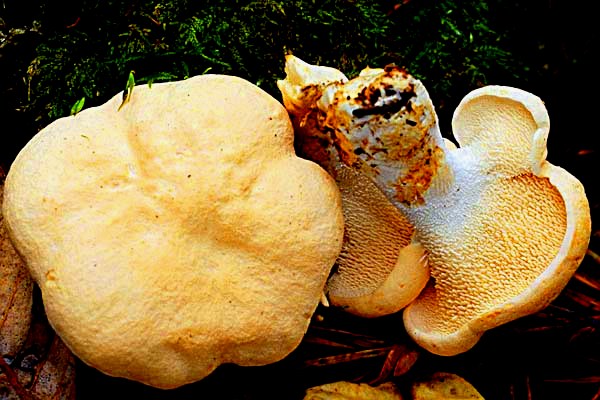
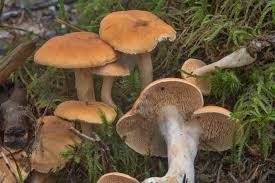
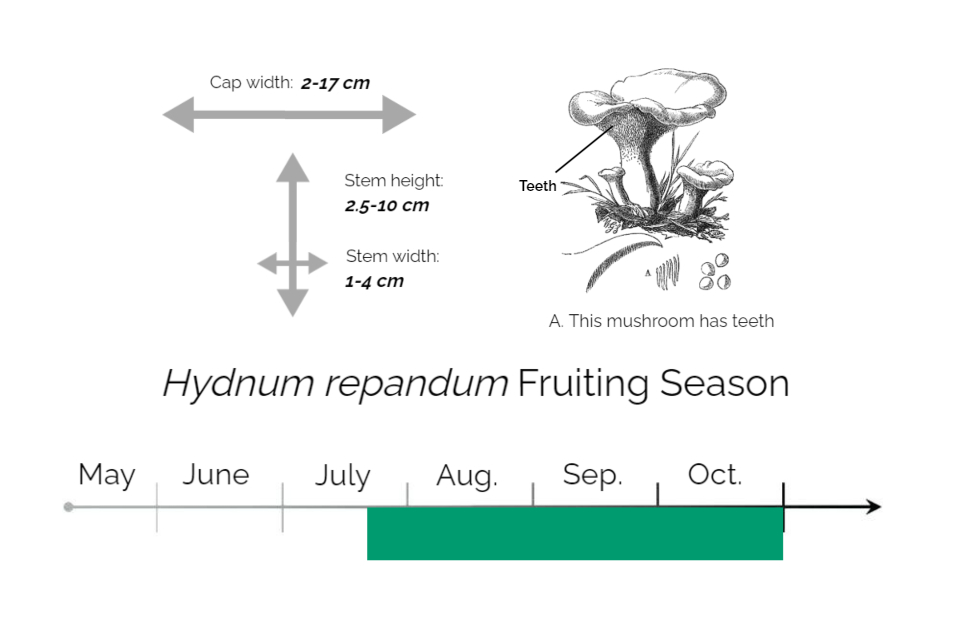
Hydnum repandum can be found growing in conifer forests from July to November.
Often found near old-growth leafy hardwood forests, alone or in groups.
Like all other mushrooms, they should be cut and not pulled from the soil.
Hedgehog mushrooms are mycorhizal and benefit the environment. You can identify them by their teeth like gills under the caps.
They are edible and have no toxic lookalikes.
Birch Milkcap (Lactarius tabidus)
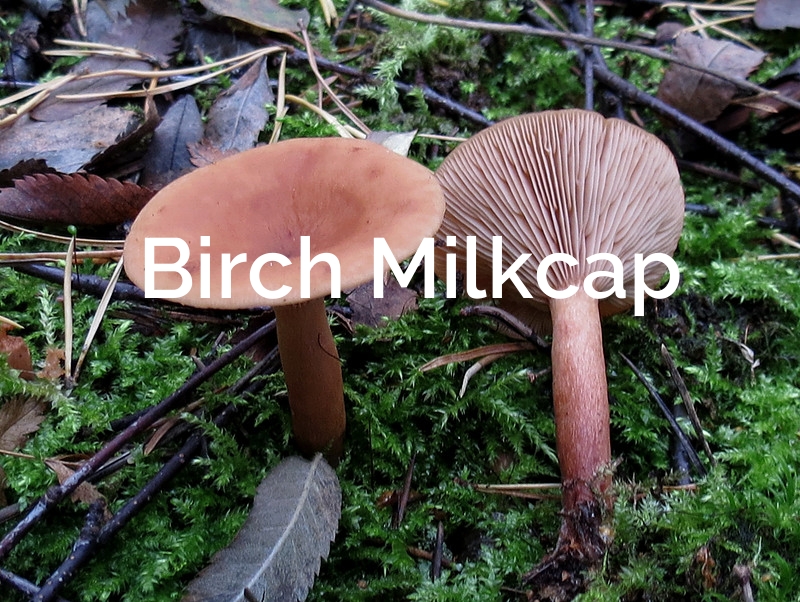
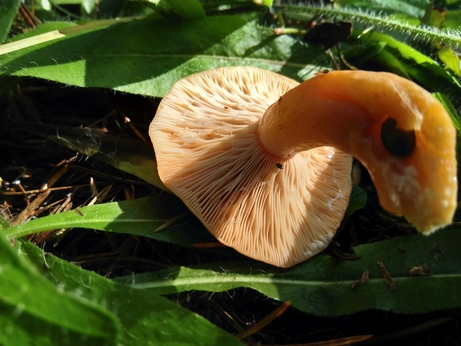
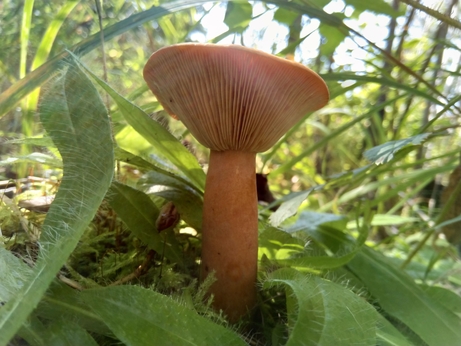
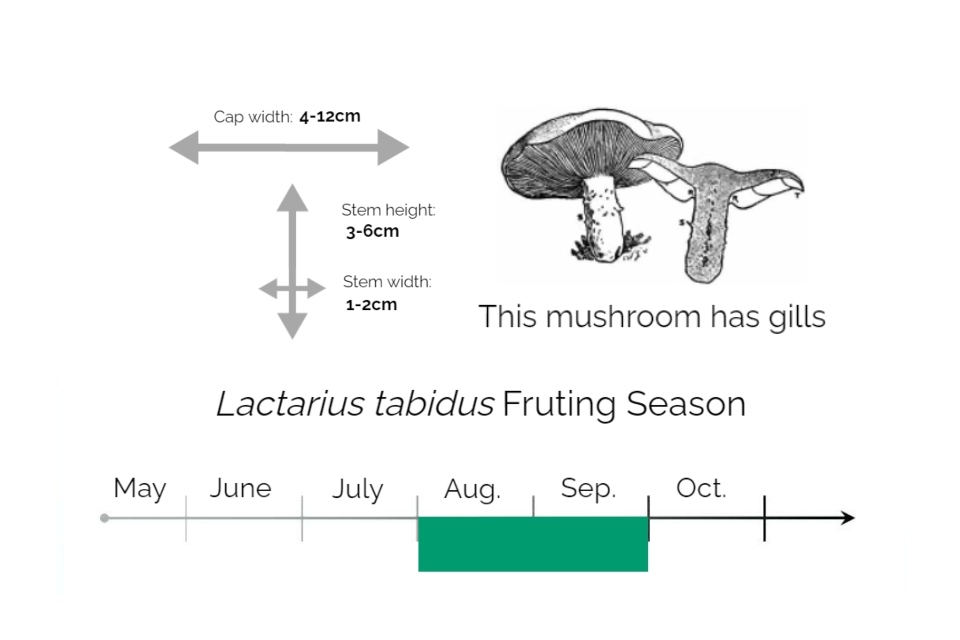
Birch Milkcap is found in coniferous and deciduous mixed forests from August to September.
They are commonly found around birch trees but also around pines.
They create a sort of milk-like substance on their gills that allows for easy identification.
Lactarius tabidus has a slight maple, brown sugar aroma. They most often grow dispersed but sometimes in high numbers in one area.
Edible: Flavor is soft but pleasant, milkcap saffron sautés are quite delicious.
Black Trumpet (Craterellus fallax)
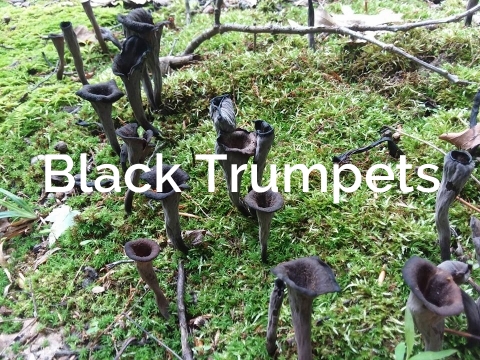
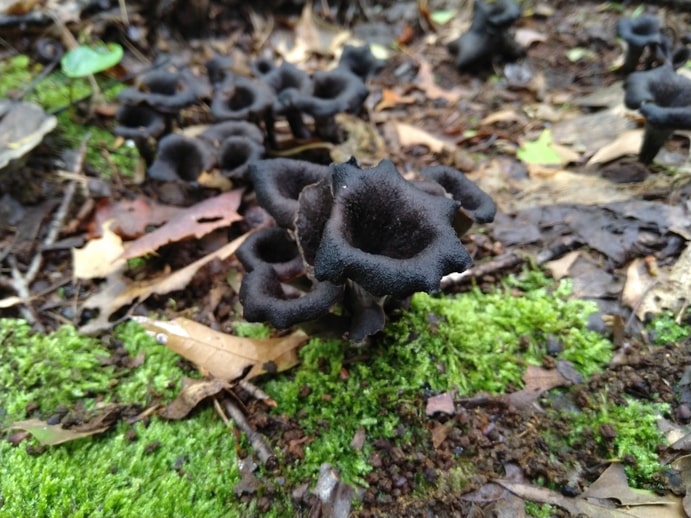
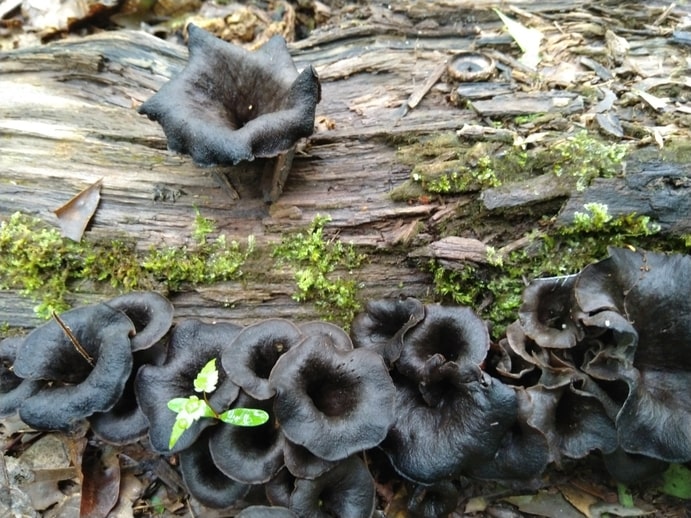
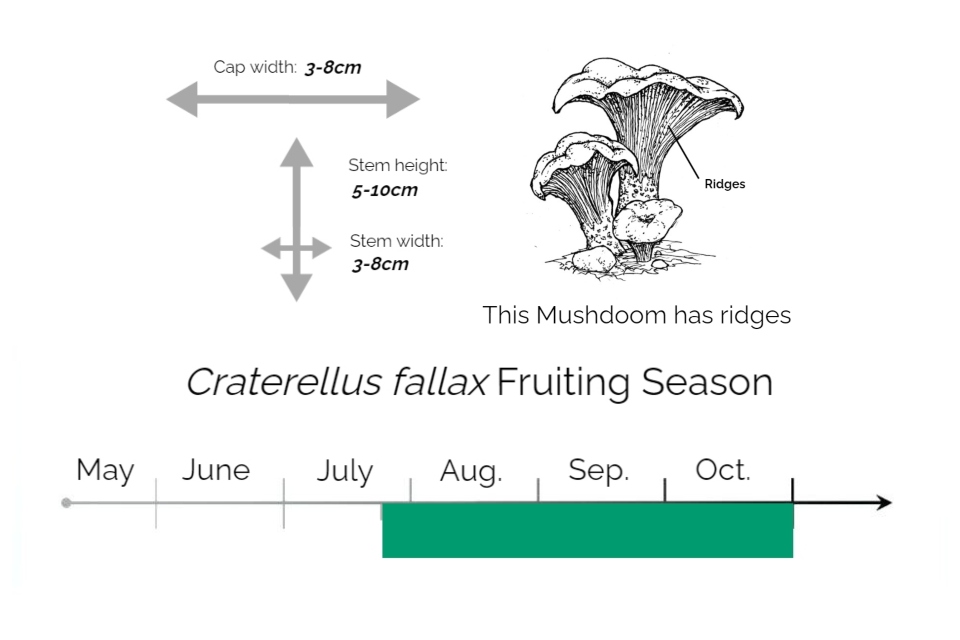
Black Trumpet mushrooms can be harvested from late July until the end of October.
The black color, often with a violet reflection, and external ridges make this mushroom easily recognizable.
Black trumpets are found in hardwood forests often growing through the moss, or often in moist areas such as stream beds. Craterellus fallax is often associated with oak and beech trees.
Edible: black trumpets make a great addition to a pasta dish.
Many say black trumpets are amongst the best-tasting mushrooms you can find, and with no toxic lookalikes, foraging them is foolproof.
Swollen-Stalked Cat (Catathelasma ventricosum)
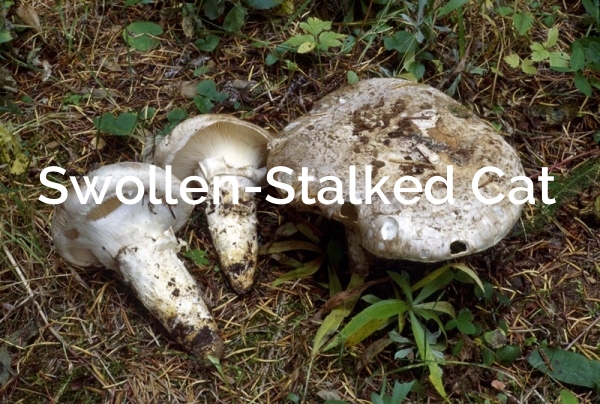
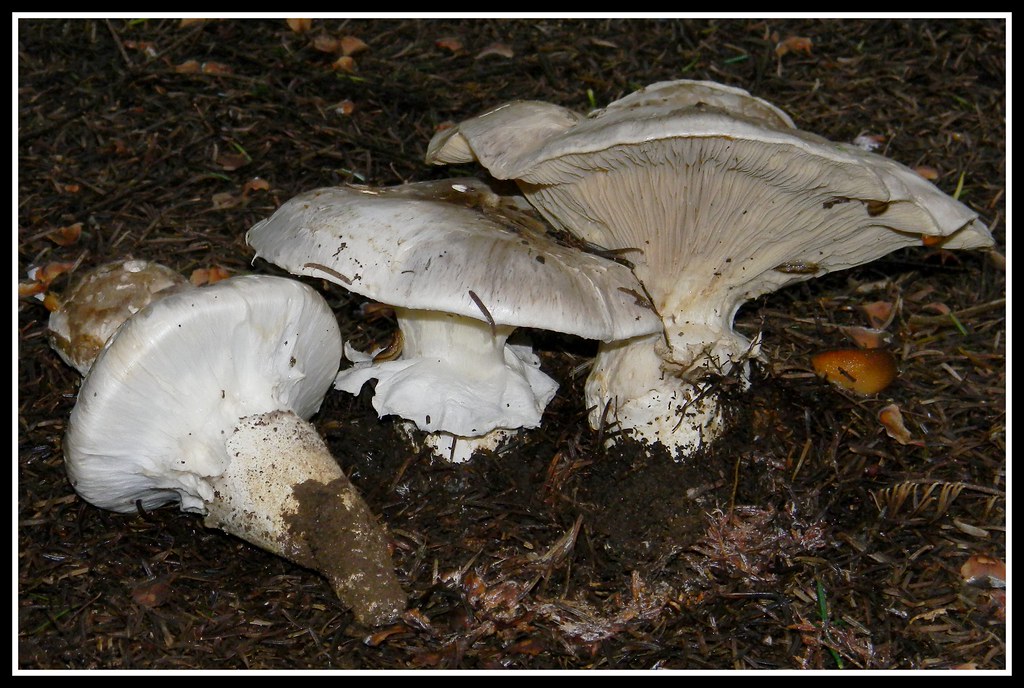
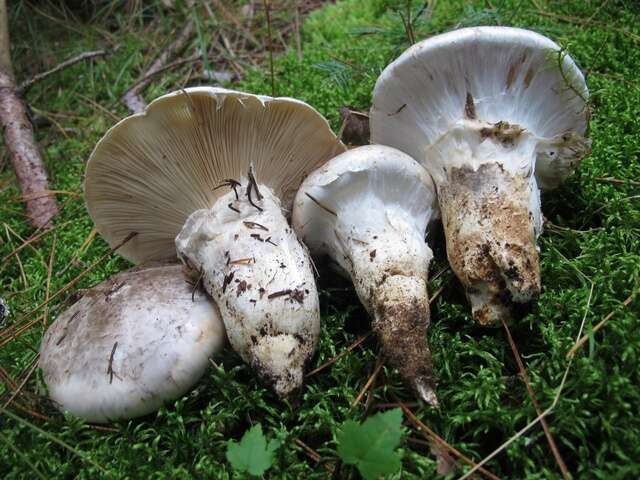
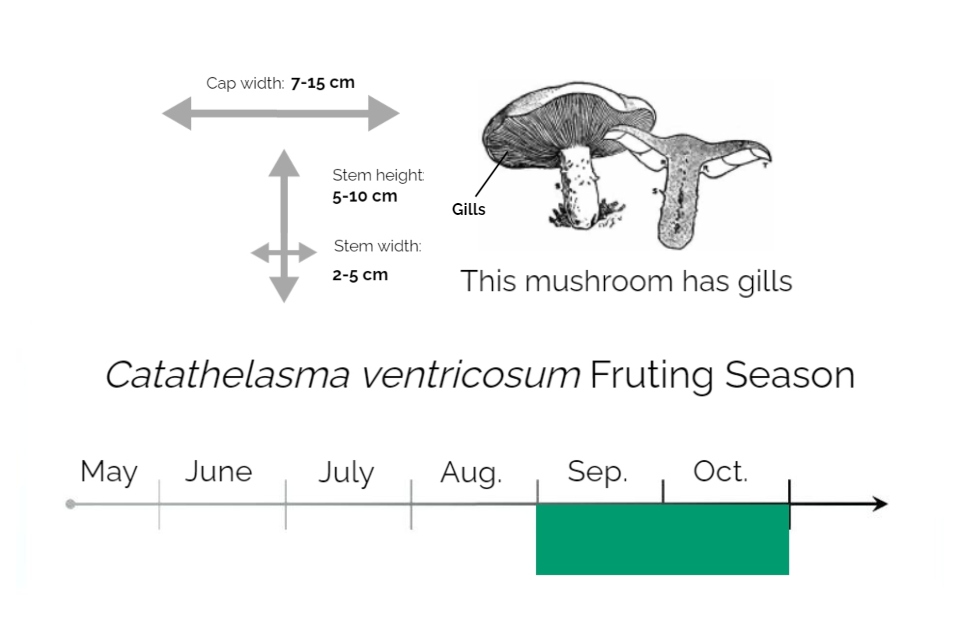
Swollen-stalked cat can commonly be found growing in the Pacific Northwestern forests from late summer to fall.
It’s often associated with conifers, especially spruce in sandy and silty soils.
Catathelasma ventricosum looks very similar to matsutakes (thricholoma magnivelare) but is differentiated first by its foot that enlarges as it goes up and its decurrent gills.
Often grows isolated but sometimes in small patches of two or three.
Edible: Many quickly fall in love with this mushroom on first taste and luckily it’s rarely infested with any bugs! Swollen-stalked cat can be grilled and turned into a delicious salad.
Turtle Mushroom (Sarcodon imbricatus)
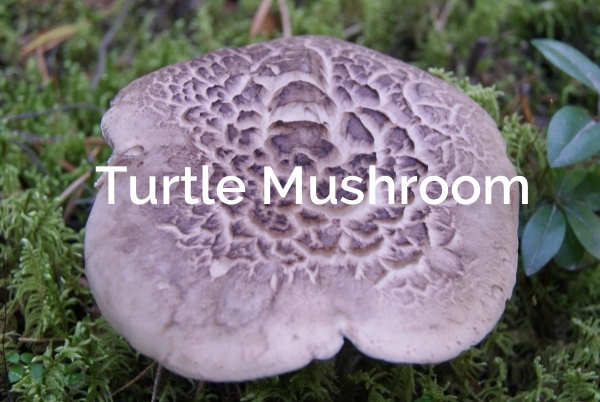
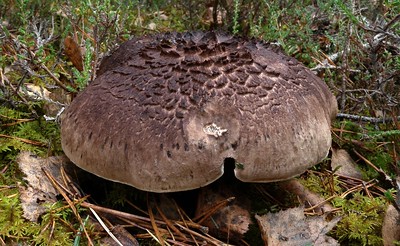
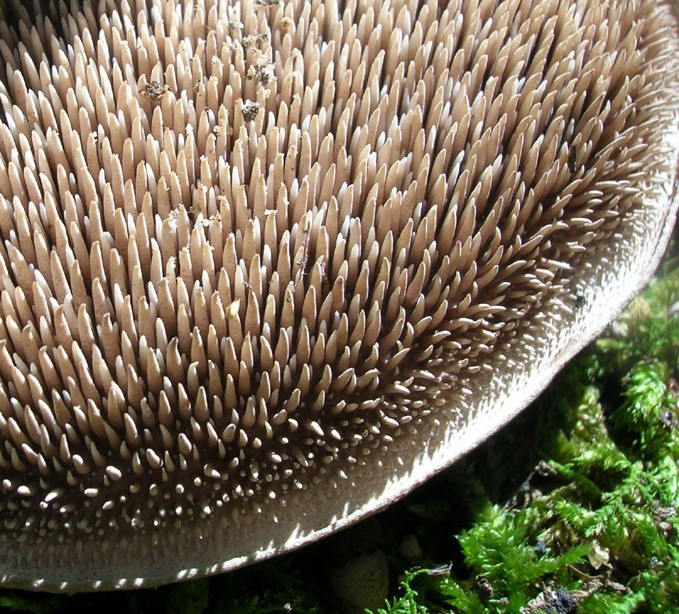
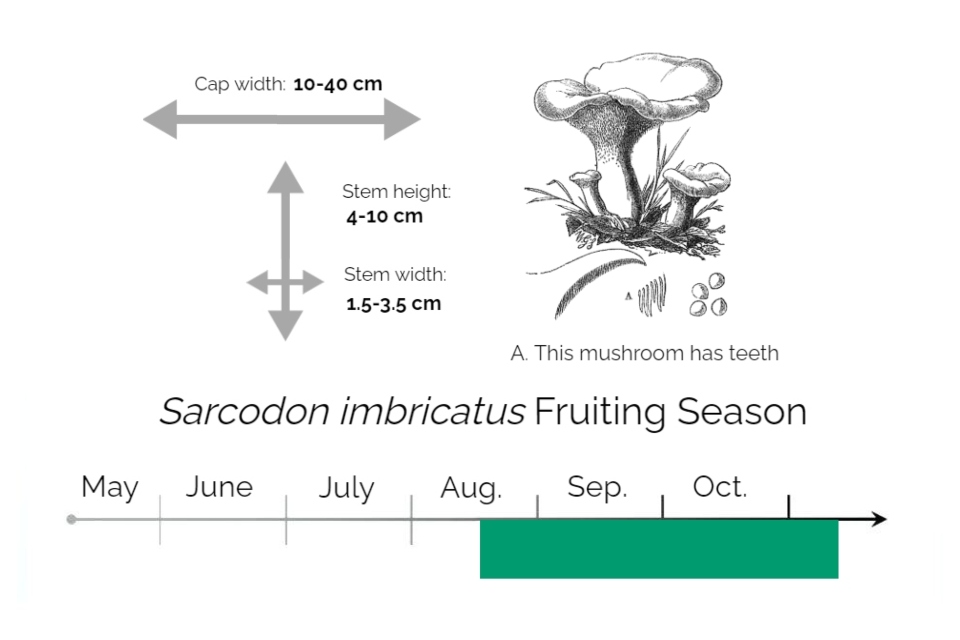
Turtle Mushrooms can be found growing throughout Europe and North America starting from June in Europe and late August in North America, all the way to October.
Sarcodon imbricatus is often associated with spruce trees, pine trees, and hardwoods.
Turtle mushrooms are mycorrhizal mushrooms that benefit the forest around them through their vast mycelium networks underground.
They are easily recognizable by their turtle shell-looking caps and the teeth under their caps that reach up to 15 mm long each.
Edible: Although they taste quite bitter and are much better dried and reduced into a powder, then brewed into a tea.
Yellow Foot Chanterelle (Craterellus tubaeformis)
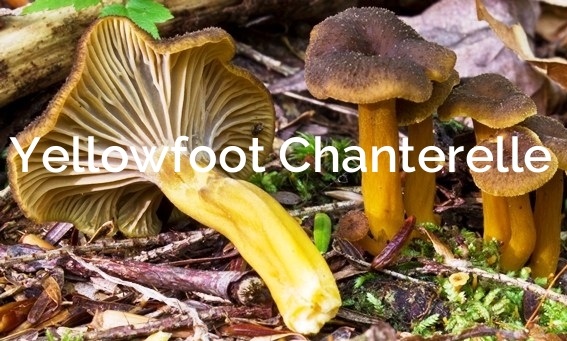
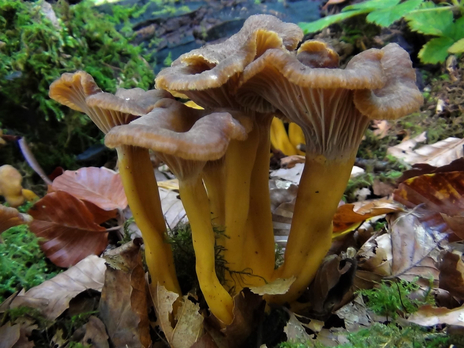
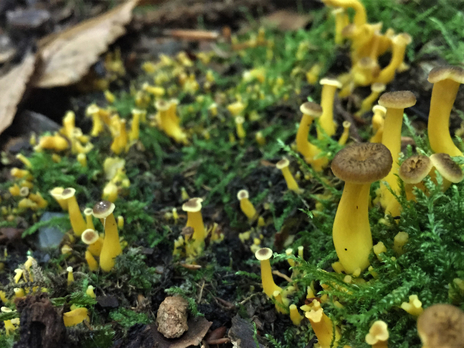
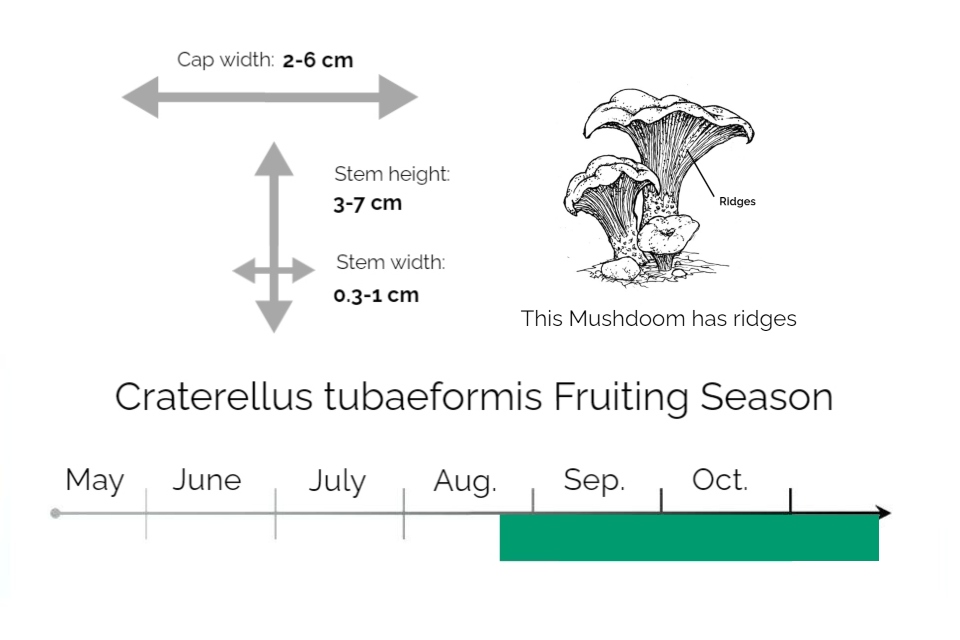
You can harvest Yellow-foot chanterelle from late August to November.
As opposed to the common chanterelle that is harvested in warmer weather, yellow-foot likes cooler temperatures, which is why it’s often called the winter chanterelle.
Craterellus tubaeformis is often found in peat bogs, mossy areas with black spruce, and larch. Can be found along with pines as well as long as there is a dense enough layer of moss.
You can recognize it by their yellow foot and ridges underneath the cap and along the stem. Cap colors can range from yellow to brown.
Edible: It’s quite a small mushroom but packs a lot of flavors.
Use Yellow-foot chanterelle to make a delicious broth.
Bonus: Fairy ring Mushrooms (Marasmius oreades)
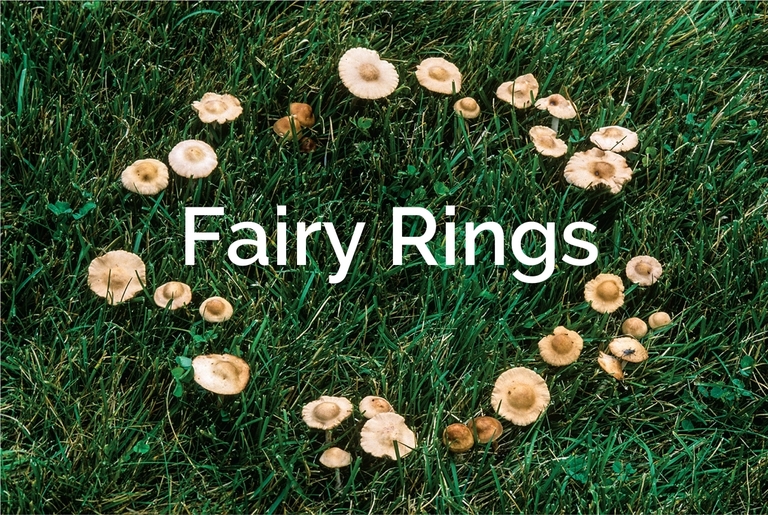
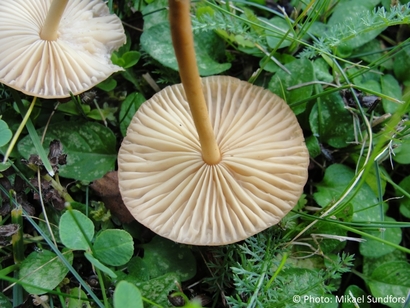
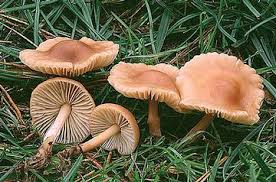
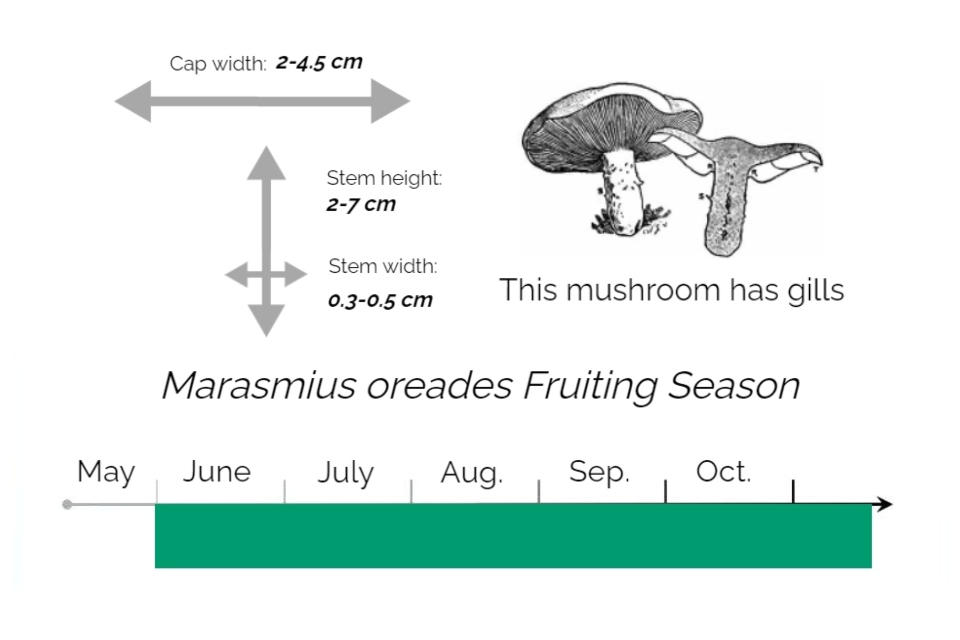
Fairy Ring Mushrooms can be found growing almost all year long during warmer temperatures.
Sometimes by themselves but often forming fairy rings in your backyard.
Marasmius oreades is a saprophyte which means it decomposes dead matter and brings nutrients into your soil.
Edible: The cap only, often dried first then rehydrated.
You should be warned: Since this mushroom often grows right on your lawn, it can easily be contaminated by pesticides, lawnmower gas residue, and animal feces.
Fairy rings often recur every year and get larger which can be a pain for anyone wanting a perfect lawn. For others, they are a cherished source of inspiration and beauty that brings nutrients into the soil.
How to prepare mushrooms for sale
Picking boreal forest mushrooms can be relatively profitable, although it’s uncommon to see a large mushroom picking operation as the profits aren’t easy.
You can often sell fresh mushrooms locally with relative ease but to sell fresh or dried mushrooms at an international level, for example to Europe or Japan, the mushrooms need to go through a process for quality assurance.
Additionally, markets such as China & India already mass produce mushrooms and flood the market. This makes prices quite competitive which means it’s not always easy to negotiate.
Conclusion
Since boreal forest mushrooms only appear on the forest floor for a short period of time and quickly deteriorate, do you think it’s a bad thing to be harvesting them for ourselves or to be sold to restaurants that don’t have the opportunity to forage?
No experienced mushroom hunter wants to wipe out any patches, as a matter of fact, we want to learn to better preserve them and return to them every year.
But we always have to keep in mind that wildlife also relies on mushrooms for food sources and that sharing is caring.
Forests have much more value to give than we presently use, not only lumber but a whole list of non-timber forest products have potential commercial value.
Here are a few more mushrooms we wrote about that might interest you:
Please forage responsibly and remember: The sustainable way to forage is the only way to forage.
Additionally, you can always give a shot at forest farming mushrooms.
Interested in medicine nature has to offer? We have a few options for you:
- 2 Medicinal Mushrooms that can Change Your Life.
- Boreal Forest Medicinal Plants: Illustrated Foraging Guide.
- 8 Boreal Forest Medicinal Trees Native Americans Used.


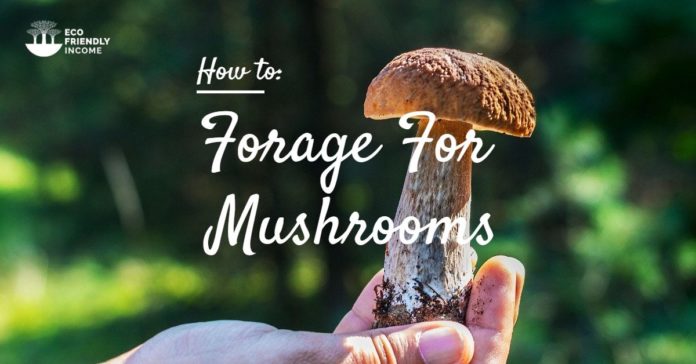
[…] Edible Mushrooms […]